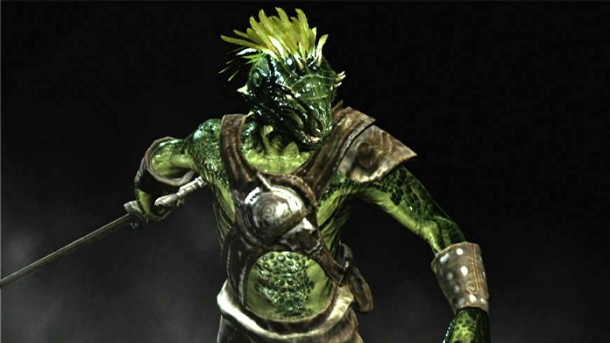Please support Game Informer. Print magazine subscriptions are less than $2 per issue
Character Building

Due to the recent release of Skyrim’s Dragonborn DLC, I’ve been spending a lot of time in Bethesda’s massive world again. After playing for an unhealthy amount of time, I realized that I wasn’t paying too much attention to the developer’s story. However, I was still following a narrative, whether it was imposed on me or not.
I began my exploration of Solstheim, the area of Morrowind the content lets you explore, with my upper-level High Elf. Like many people, my first Skyrim character was a bit of an experiment, so his perks are spread thin across a variety of skills. But lately, I try to focus on using magic. No rule says I have to do this; the game lets me mix and match however I see fit. The more I thought about it, the more I realized that my other characters fit the same trend. My Argonian isn’t consigned to thief skills, but I still stick to them, even though they’re all maxed out. The same goes for my Imperial’s fighting skills.
The armor I wear reflects this idea, too. Even if the protection, enchantments, or skill augmentations of a certain set of armor outweigh my current wardrobe, I won’t wear it if it doesn’t fit my character. Something feels off when I equip my Argonian with glistening Elven Armor. Seeing my High Elf mage sporting the animal fur of a hunter makes him look awkward and out of place.
What really made me realize how much I had invested in my characters is how I approach each situation, combat or otherwise. I see my Argonian as a rugged, do-whatever-it takes thief who uses as little words as possible. Should the situation arise when I find myself in the middle of a brawl, I’ll use Illusion spells and sneak skills to escape and reassess the situation (and maybe run away). Even my conversations showed a pattern; I would say as few words as possible, usually resulting in some pretty hilarious responses – an Orc threatened me saying, “I have two daggers, only one of which you can see. Start talking.”
Although I was avoiding any semblance of a story in terms of main quests and side missions, the exploration, combat, and everyday conversations I engaged in took on a story in my own mind. Just like a tabletop RPG, I was imagining my own character and generating an intangible story around him. Never once did Bethesda say, “Be a thief. Wear this. Say this. Go here.” Everything I did was a result of the character I had imagined and formed to suit my own story.
This kind of narrative isn’t specific to Skyrim by any means. Any number of games can create this sensation. It is, however, specific to video games. Movies, by definition, need to guide the viewer from point A to point B under the umbrella of a specific story. Because a game lacks that strong narrative doesn’t mean the player won’t feel any intent of their own though. I created my own fiction in Skyrim because that’s exactly what great games allow: player involvement.
Some of my favorite video game characters are set within amazing stories. John Marston, Jack from Bioshock, and Frog from Chrono Trigger all come to mind. Still though, I relate to Elrohir the High Elf mage, Kal-El the Argonian thief, and Imrahil the Imperial brawler more than any other characters, because I was the one who created them. Bethesda handed me the reins and let me shape the character and the story that I wanted.
Skyrim stands as a shining example of what video games can do. I love a well-written character or amazing script almost as much as fun gameplay. But my favorite games are the ones wherein I can create my own character. That involvement is not, and never will be, possible in any other medium. This video game-specific method of characterization creates an attachment that lasts longer than just a few hours, and it’s exciting to think about what’s coming next.










